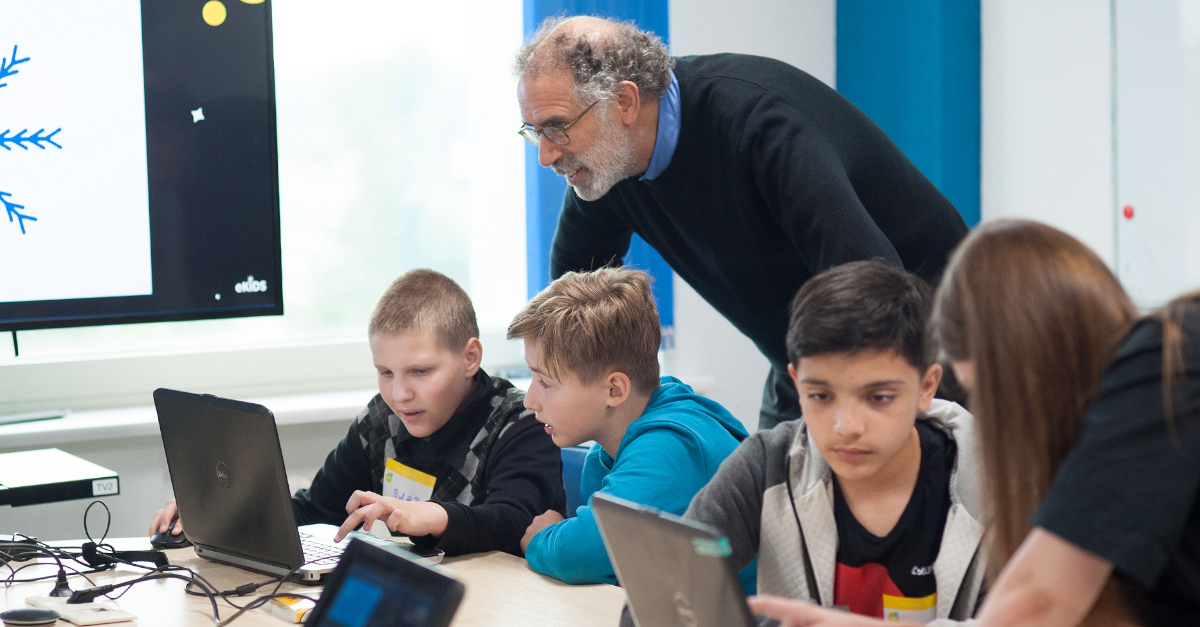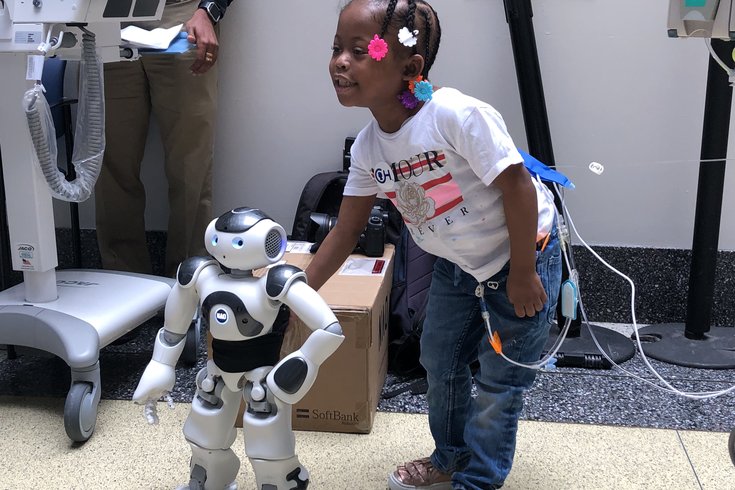3 strategies to keep students engaged in STEM
STEM (science, technology, engineering, and math) is more than just an acronym or a collection of letters. Rather, it is an instructional movement that embodies cross-curricular concepts from four fundamental disciplines, as well as a research-based strategy that addresses the future needs of a technology-driven work force and sustaining a global economy. The importance of STEM is further validated by its prominence in the Next Generation Science Standards (NGSS).
:max_bytes(150000):strip_icc()/GettyImages-705002115Smaller-59a917ba396e5a001037e595.jpg)
One of the most effective instructional approaches toward the implementation of STEM in grade-level courses is through project-based learning (PBL). In this approach, instruction occurs through student-centered investigations focused on a specific topic driven by a set of objectives, culminating in a broadly-defined product or technique. Projects foster an environment of discussion, creativity, problem-solving, inquiry, modeling, and testing, and are applicable to students in all grade levels and subjects, but particularly within the STEM arena.
- 0 Comments
- Oct 2, 2019 10:00:00 AM
How EdTech Will Change School Culture
For more than 100 years, we’ve relied on the factory model for providing education. Born of the industrial age, when efficient systems mattered most in producing a product, the factory model mimicked assembly-line work.
Schools built large classrooms and filled them with multiple rows of students. Teachers delivered one-size-fits-all instruction, and process was replicated in room after room, hall after hall, and school after school.
Naming the education system after industrialism was more of a metaphor than anything else, but one thing became apparent. Industrialism had served its purpose. Continuing to model an education system after an era that had passed was hurting instruction, not helping it. In education, we deal with people, not parts.

- 0 Comments
- Oct 1, 2019 10:51:51 AM
CHOP's new robot sings, dances and even recognizes patients' faces
Philadelphia hospital debuts new robot designed to engage, educate young patients
 JOHN KOPP/PHILLYVOICE Saaliha, a 7-year-old patient at the Children's Hospital of Philadelphia, greets NAO, the hospital's new interactive robot.
JOHN KOPP/PHILLYVOICE Saaliha, a 7-year-old patient at the Children's Hospital of Philadelphia, greets NAO, the hospital's new interactive robot.
- 0 Comments
- Oct 1, 2019 10:49:19 AM
6 Ways We Kill Students’ Motivation
“What can we do to motivate our students who need it the most?” my principal recently asked.
As a teacher, I, of course, had many thoughts. But those thoughts are just that: mine. So I asked my principal a simple question: Why don’t we ask the students?
So we did.

- 0 Comments
- Sep 30, 2019 10:00:00 AM
A Better Way to Integrate Edtech
Helping reluctant teachers bring education technology into their classrooms starts with respecting their perspective.

- 0 Comments
- Sep 27, 2019 10:00:00 AM
- Posted by Natalia Galvis
- Topics: EdTech, STEM, STEMchat, Edchat
Station Ideas You'll Want For your STEM Classroom.
Some STEM teachers do it naturally.
They seem to have a sixth sense about how to design and implement STEM classroom learning centers. These teachers are brilliant when it comes to thinking up centers that their students can’t wait to use. Learners are actively involved in explorations that spark curiosity, and the excitement of learning is palpable.
The room is abuzz with on-task conversation, and none of the students are off-task. To top it off, the teacher is relaxed while facilitating student learning. This is the kind of environment you’d like in your own classroom.
What if creating classroom learning centers for STEM was easy?
It is!

- 0 Comments
- Sep 26, 2019 10:02:00 AM
- Posted by Natalia Galvis
- Topics: EdTech, STEM, STEMchat, Edchat
Infographic: The Value of a STEM Education
Knowledge in science, technology, engineering, and math (STEM) can be the key to a successful future. Here's why a STEM education matters and how you can inspire students to pursue STEM careers.

- 0 Comments
- Sep 25, 2019 10:05:00 AM
- Posted by Natalia Galvis
- Topics: EdTech, STEM, STEMchat, Edchat
3 Ways to Excite and Encourage Girls in STEM in Your Classroom
As a science teacher, keeping girls in STEM is something I strive for. A few years ago, my school was fortunate enough to have a Techbridge Girls after-school program. Techbridge Girls is a nonprofit organization focused on keeping girls in STEM. It provides role models, families, and organizations with training, curriculum, and support to girls in undeserved areas.

The co-teacher of the after-school program was a female college student who shared her own struggles and successes in the STEM field. The curriculum included the girls adjusting the design of a robotic wooden dinosaur until it could walk a short distance without falling over, disassembling a hair dryer to determine what made it work, properly soldering five locations on an electronic circuit board, and engineering a gumball machine. I witnessed the girls' confidence grow as the weekly tasks increased in difficulty. With each struggle, they needed to find their own solution and with each solution, they found success. The experience gave them a glimpse of what their future could consist of.
- 0 Comments
- Sep 24, 2019 9:45:00 AM
- Posted by Natalia Galvis
- Topics: EdTech, STEM, teachers, STEMchat, WomeninSTEM, Edchat, girlsinSTEM
10 Signs of a 21st Century Classroom
One of my early challenges in coordinating my school’s STEM efforts has been determining exactly what is meant by a STEM school. There are probably as many answers to this question as there are educators, but I have decided to focus on what goes on inside the classroom. Not just in a science or math class, but in all classrooms. There are some activities that have traditionally been done well by the STEM disciplines that can be cross applied to all subjects.

- 0 Comments
- Sep 23, 2019 10:12:00 AM
- Posted by Natalia Galvis
- Topics: EdTech, STEM, 21st Century Classroom, teachers, Edchat
How To Use Critical Thinking in Your Classroom
There are tons of topics and concepts that school has to introduce to young people, but the ability of critical thinking is easily the most vital among them. Stanford’s Encyclopedia of Philosophy defines it as “careful thinking directed to a goal”.
Critical thinking abilities include discerning wrong info and unreliable sources, connecting various facts, remaining rational and finding what is wrong with the reasoning of others. All of these are incredibly valuable, no matter which teaching strategies you’re employing.

- 0 Comments
- Sep 20, 2019 10:00:00 AM
- Posted by Natalia Galvis
- Topics: EdTech, STEM, 21st Century Classroom, teachers, Edchat, Critical thinking
Relevant Posts
Popular Posts
Subscribe to Email Updates
-
I Want To Learn MoreADDITIONAL INFORMATION


